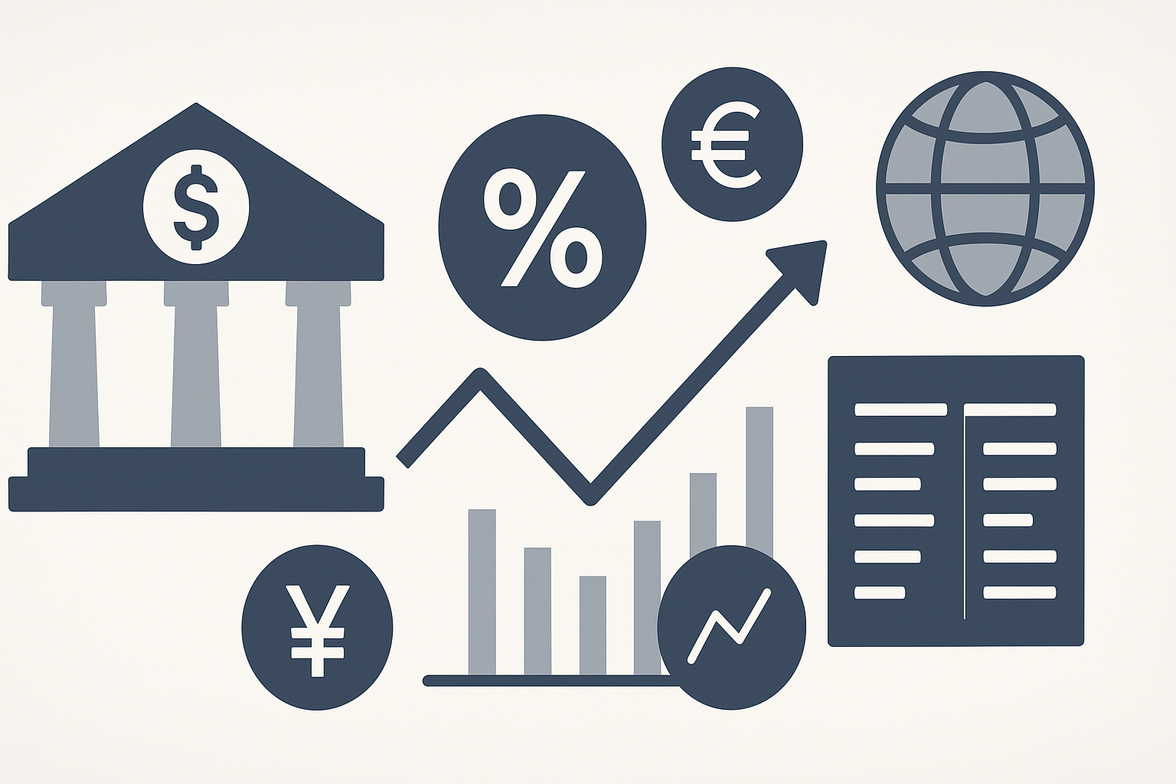
Introduction
Many individuals face financial uncertainty. Tracking personal finances can feel overwhelming. Without a clear plan, money often disappears. A personal budget offers a powerful solution. It provides a transparent overview of your income. It also details all your expenditures. This tool is far more than just recording transactions. It is a strategic blueprint for your financial life. This blueprint empowers you to make wise decisions. These decisions are crucial for building wealth. They are vital for achieving long-term financial stability. Effective money management is the foundation. It supports all your financial aspirations. These aspirations include smart investing. They also cover comprehensive retirement planning. Even understanding insurance benefits from budgeting. This ultimate guide helps you start. It provides practical steps for creating a personal budget. Embrace financial discipline today. Unlock a future of greater security.
Understanding Your Financial Landscape
Before creating a budget, assess your current situation. This first step involves gathering all financial data. Understand your total income sources. Also, identify every single expense. This clarity forms your budgetary foundation. Without this, your budget will lack accuracy. Accurate data is always paramount. It ensures your plan is realistic. A realistic plan is more sustainable.
Calculating Your Total Income
Your income is the money you receive. This includes your salary or wages. It also covers any freelance earnings. Include rental income if applicable. Do not forget investment dividends. Even small side hustles count. Calculate your net income after taxes. This is the amount you actually have. Use this figure for your budget. Knowing this number is very important. It sets your spending limits.
Consider irregular income carefully. Freelancers or commission-based workers face this. Average your income over several months. Use a conservative estimate. This prevents overspending. It also builds a buffer. This helps manage income fluctuations. Consistent income understanding is vital. It improves your financial forecasting.
Identifying Your Expenses
Expenses fall into two main categories. These are fixed and variable costs. Understanding each is critical. It helps in effective money allocation. This knowledge allows for better control. It improves overall financial planning. Tracking every outflow is necessary.
Fixed Expenses
Fixed expenses remain constant. They usually have the same amount. These occur regularly each month. Examples include:
- Rent or mortgage payments
- Car loan payments
- Insurance premiums
- Subscription services
These costs are predictable. They are easier to budget for. Prioritize these essential payments. They secure your basic needs.
Variable Expenses
Variable expenses fluctuate. Their amounts change from month to month. Examples are:
- Groceries
- Dining out
- Entertainment costs
- Utility bills
- Fuel expenses
These are areas where you have control. You can often reduce these costs. Finding savings here is possible. Monitoring these closely is key. It helps in adjusting your spending.
Tracking Your Spending Habits
Knowing where your money goes is crucial. For one month, track every single penny. Use an app, a spreadsheet, or a notebook. This exercise reveals your true habits. You might discover surprising patterns. Many people underestimate small expenses. Daily coffees add up significantly. This tracking phase is eye-opening. It provides real data for your budget. Be honest with your spending. This is a critical step.
Popular Budgeting Methods
Choosing the right budgeting method is personal. Different approaches suit different lifestyles. Explore these popular options. Find one that resonates with you. The best method is one you can sustain. Consistency is more important than complexity. Each method offers unique advantages. Consider your financial goals. Think about your preferred level of detail. This helps you select wisely.
The 50/30/20 Rule
This method simplifies money allocation. It suggests dividing income into three parts. These are:
- 50% for Needs: Essential expenses like rent, utilities, and groceries. Basic transportation also fits here. This covers your core necessities.
- 30% for Wants: Non-essential items such as dining out or entertainment. New clothes or hobbies also qualify. This allows for flexibility and enjoyment.
- 20% for Savings and Debt Repayment: Includes emergency funds and investments. Extra payments on debt go here. Retirement contributions are part of this.
This rule is straightforward to implement. It helps maintain a balanced lifestyle. It also builds financial security. This method is popular for its simplicity.
Zero-Based Budgeting
Zero-based budgeting assigns every dollar. Each dollar of income has a job. You allocate money until zero remains. This happens before the month begins. Every expense category gets a specific amount. Savings and debt payments are also assigned. This method requires careful planning. It offers maximum control over your money. It prevents funds from going unallocated. This approach ensures mindful spending. It helps you prioritize financial goals.
At the end of the month, your income minus expenses should be zero. This does not mean your bank account is empty. It means all your money is accounted for. This method fosters intense financial discipline. It is highly effective for debt reduction. It also boosts savings significantly. Many find this method very empowering. It provides clear visibility into funds.
The Envelope System
This method uses cash for variable expenses. You allocate specific cash amounts. These amounts go into physical envelopes. Label each envelope by category. Examples are “Groceries” or “Entertainment.” When the cash is gone, you stop spending. This prevents overspending in certain areas. It provides a tangible spending limit. This system promotes mindful consumption. It is excellent for visual learners. It helps control impulse purchases. It reinforces spending awareness.
While traditional, a digital version exists. Many apps mimic the envelope system. This helps avoid carrying too much cash. It offers similar benefits digitally. This method works well for variable costs. It helps keep those flexible expenses in check. It builds strong spending habits. Try this for areas where you overspend.
Setting Financial Goals and Making Your Budget Work
A budget is a tool for achieving goals. Without clear objectives, it lacks direction. Define your financial aspirations first. These goals provide motivation. They give purpose to your spending plan. Aligning your budget with goals is essential. This ensures your money works for you. It transforms abstract numbers into tangible progress. Think about both short-term and long-term targets.
Defining Your Financial Goals
Goals should be SMART. This stands for:
- Specific
- Measurable
- Achievable
- Relevant
- Time-bound
This framework makes goals concrete. It increases your chances of success. Do you want to build an emergency fund? Aim for three to six months of expenses. Is your goal to pay off high-interest debt? Set a clear repayment date. These specific targets guide your budget allocations. They inform your saving strategies.
Consider long-term aspirations too. These include retirement planning. Think about investing in the stock market. Maybe you want to save for a down payment. These larger goals require consistent effort. They need a disciplined approach. Your budget must reflect these priorities. Allocate funds towards these future plans. This proactive approach is key. It secures your financial future.
Building Your Emergency Fund
An emergency fund is a financial safety net. It covers unexpected expenses. Job loss, medical emergencies, or car repairs fit here. This fund prevents you from taking on debt. Aim for three to six months of living expenses. Keep this money in an easily accessible savings account. This fund is separate from other savings. It provides crucial peace of mind. Prioritize building this fund first. It is foundational to financial security.
Automating Your Savings and Investments
Make saving an automatic habit. Set up automatic transfers. Move money from checking to savings. Do this on payday each month. Treat savings as a fixed expense. This ensures you pay yourself first. Automate investment contributions too. This applies to retirement accounts. It includes brokerage accounts also. Automation removes decision fatigue. It promotes consistent progress. This strategy builds wealth passively.
Reviewing and Adjusting Your Budget
A budget is not static. It requires regular review. Life circumstances change constantly. Your income might increase or decrease. Expenses can also shift unexpectedly. Review your budget monthly or quarterly. Compare your actual spending to your plan. Identify areas for improvement or adjustment. Be flexible and realistic. A flexible budget is a successful one. It adapts to your evolving needs.
Do not get discouraged by setbacks. Everyone has weeks with unexpected costs. The goal is continuous progress. Adjust your plan as needed. Maybe you need to cut back. Perhaps you can increase savings. This iterative process is normal. It makes your budget a living document. This ongoing engagement is powerful. It ensures your budget stays relevant.
Budgeting and Its Broader Financial Impact
A well-managed personal budget extends beyond daily spending. It becomes a powerful tool. This tool impacts your entire financial life. It is the cornerstone for wealth creation. It supports intelligent investment decisions. It underpins effective retirement planning. Even understanding insurance needs benefits. This discipline opens doors. It leads to greater financial opportunities. Embrace this holistic view of budgeting.
Budgeting for Investments
Your budget helps free up capital. This capital can be used for investing. Even small, consistent contributions grow. Diversification is a key investment strategy. Your budget supports this. It ensures you have funds available. Consider various investment vehicles. These include:
- Stocks
- Bonds
- Mutual funds
- ETFs (Exchange Traded Funds)
ETFs offer diversification. They can be a good starting point. Always understand investment risks. A solid budget provides a cushion. This cushion reduces financial stress. It allows for more aggressive investing. This is possible when risks are managed.
Exploring Cryptocurrency Investments
For those interested in Crypto, budgeting is essential. The cryptocurrency market is volatile. Never invest more than you can lose. Your budget clearly defines this amount. It prevents emotional, risky decisions. Allocate a small, specific percentage. This percentage should be from your “wants” or “savings.” Research projects like:
- Bitcoin
- Ethereum
Understand blockchain technology fully. A budget provides the discipline. It allows for measured exposure. This exposure can be to this emerging asset class. Risk management is paramount here.
Integrating Budgeting with Retirement Planning
Retirement might seem far away. However, it requires early planning. Your budget directly influences retirement savings. It dictates how much you contribute. Consistently funding retirement accounts is vital. Options include:
- 401(k)s
- IRAs (Individual Retirement Accounts)
Understand your vesting period for employer plans. Maximize employer matches whenever possible. These matches are free money. Your budget makes these contributions feasible. It ensures a comfortable future. A well-planned retirement avoids financial strain.
The Role of Budgeting in Insurance Decisions
Insurance protects your assets. It safeguards against unforeseen events. Examples of insurance types include:
- Life insurance
- Health insurance
- Home insurance
- Auto insurance
Your budget helps evaluate affordability. It identifies necessary coverage. Over-insuring can be costly. Under-insuring leaves you vulnerable. A clear budget aids this balance. It allows for informed insurance choices. This ensures you are adequately protected. Without straining your monthly cash flow. Review your policies regularly. Align them with your evolving needs.
Conclusion
Creating a personal budget is a transformative process. It empowers you to take control. You gain clarity over your financial life. This guide has explored its foundational steps. From understanding your income and expenses. To choosing the right budgeting method. We also discussed setting clear financial goals. Building an emergency fund is critical. Automating your savings is a powerful strategy. Remember, budgeting is an ongoing journey. It requires flexibility and regular adjustments. Do not view it as a restrictive chore. See it as a powerful enabler. It helps you achieve your dreams.
This financial discipline impacts every area. It provides capital for smart investments. It ensures a secure and comfortable retirement. It even informs prudent insurance choices. A well-crafted personal budget is your ally. It helps navigate complex financial markets. It builds a resilient financial future. Start today with these practical steps. Embrace the power of financial planning. Your future self will thank you for it. Take charge of your money now. Cultivate lasting financial health.



